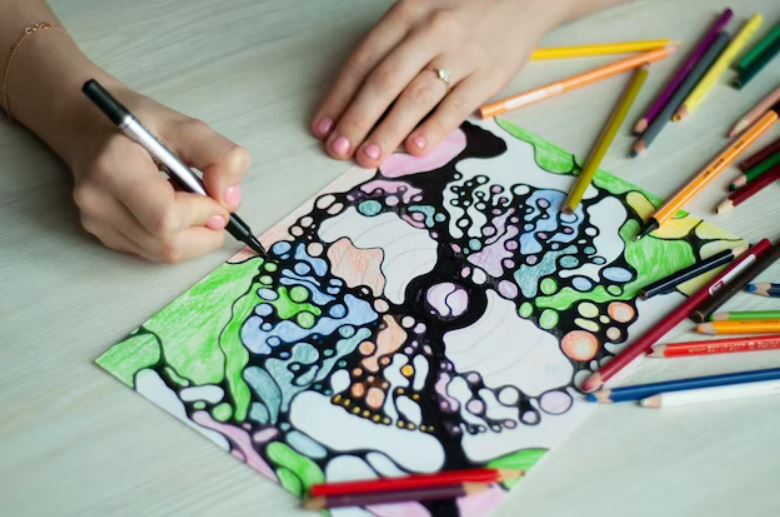
Mandalas possess a profound language of symbolism that invites us to explore their hidden meanings. To embark on your own mandala interpretation journey, follow these detailed steps:
Unlocking the Hidden Meanings
“Unlocking the Hidden Meanings” refers to the process of discovering and understanding the deeper symbolism and significance within mandalas. It implies that mandalas hold intricate messages and insights that are not immediately apparent, but can be revealed through careful interpretation. The phrase suggests that by engaging with the mandalas in a thoughtful and deliberate manner, one can unveil the underlying layers of meaning and tap into the transformative potential they offer. In the context of the article, “Unlocking the Hidden Meanings” indicates that readers will be guided through a step-by-step approach to unraveling the profound symbolism embedded within mandalas.
Step 1: Choose or Create Your Mandala
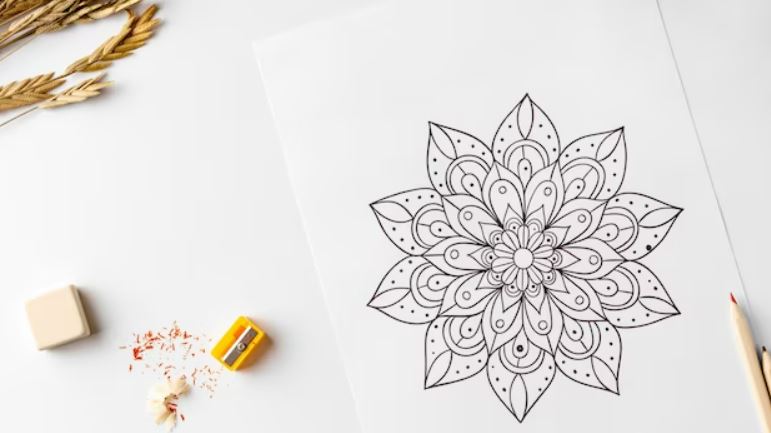
Select a mandala that resonates with you. Consider the themes, patterns, and overall design. For example, you might choose a mandala with floral motifs representing growth and beauty, or one with geometric shapes symbolizing balance and harmony. If you create your own mandala, infuse it with personal symbols or intentions that reflect your current state of mind.
- Choose a resonant mandala.
- Consider themes, patterns, and design.
- Examples: Floral motifs for growth and beauty, geometric shapes for balance and harmony.
- If creating your own mandala:
- Infuse personal symbols or intentions.
- Reflect your current state of mind.
- Floral motifs symbolize growth and beauty.
- Geometric shapes represent balance and harmony.
- Personal symbols like butterflies or hearts add depth.
- Your mandala reflects your inner world and growth intentions.
Step 2: Prepare Your Space

Create a serene and distraction-free space where you can engage with your mandala. Dim the lights, play soft instrumental music, light scented candles, or incorporate other elements that help you feel calm and centered. These surroundings will facilitate your focus and introspection.
To create a serene and distraction-free space for engaging with your mandala, it’s important to set the right ambiance that promotes a sense of calmness and centeredness. Here’s a deeper description of how you can achieve this:
- Dim the lights: Adjust the lighting in your space by using soft, diffused lighting or lowering the intensity of existing lights. This gentle illumination creates a soothing atmosphere and reduces harshness, allowing you to focus more easily on the mandala.
- Play soft instrumental music: Choose instrumental music with calming melodies, such as classical music, nature sounds, or ambient tunes. The absence of lyrics helps to quiet the mind and enhances relaxation while providing a gentle backdrop for your mandala interpretation.
- Light scented candles: Select scented candles with aromas that promote relaxation and introspection, such as lavender, sandalwood, or chamomile. Light the candles and let the subtle fragrance fill the air, creating an inviting and tranquil environment that engages your senses and supports a deeper connection with the mandala.
- Incorporate other calming elements: Consider adding additional elements to enhance the serene atmosphere, such as a soft rug or cushions for comfortable seating, a cozy blanket for warmth, or natural elements like seashells, crystals, or plants to bring a touch of nature indoors. These elements contribute to a peaceful ambiance and help to ground your focus and attention.
By creating a serene and distraction-free space through dim lighting, soft instrumental music, scented candles, and other calming elements, you can immerse yourself fully in the experience of interpreting your mandala. These surroundings will aid in relaxation, centering your mind, and fostering a deeper connection with the symbolism and messages within the mandala.
Step 3: Relax and Center Yourself
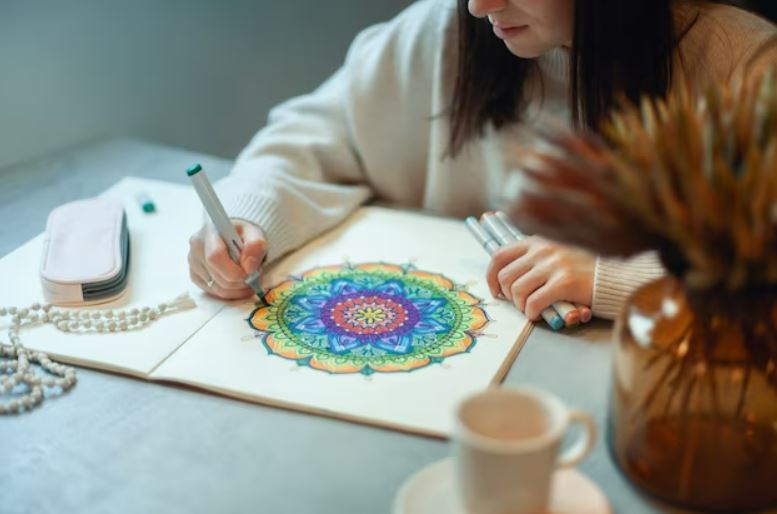
Take a few moments to relax and let go of any tension or distractions. Close your eyes, take deep breaths, and release any thoughts or concerns. Allow yourself to be fully present in the moment, preparing to delve into the depths of your mandala.
- Pause and release the weight of the world.
- Surrender mental burdens through deep breaths.
- Embrace stillness and presence for profound exploration.
Step 4: Observe the Mandala
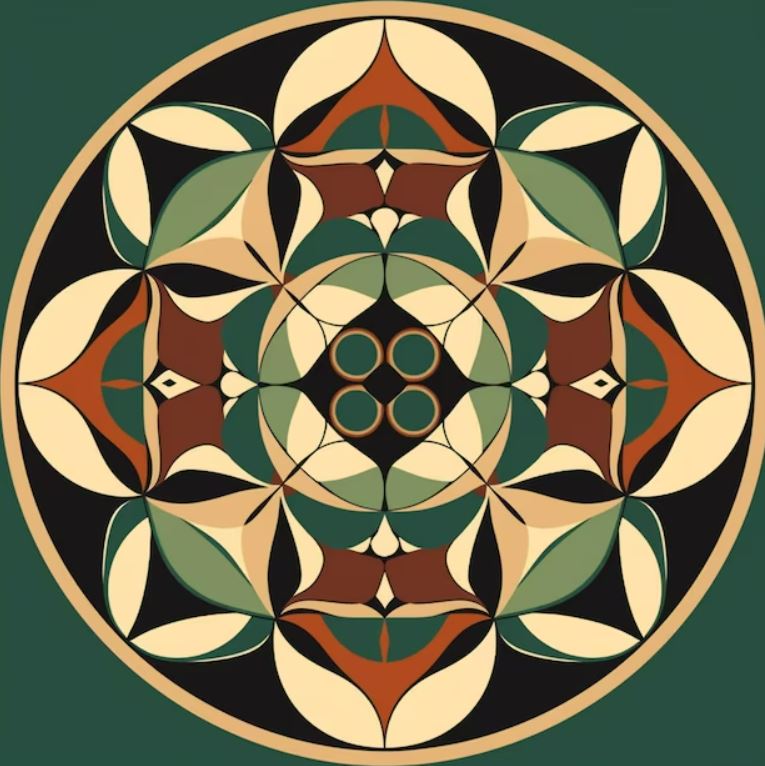
Open your eyes and take in the mandala as a whole. Observe its overall shape, patterns, and colors. Notice any immediate impressions or emotions that arise. For example, a mandala with vibrant, warm colors might evoke feelings of energy, while a monochromatic mandala may create a sense of calmness or introspection.
For instance, let’s say you encounter a mandala adorned with vibrant, warm colors like fiery reds, vibrant oranges, and sunny yellows. These hues might elicit feelings of energy, passion, and enthusiasm. The dynamic color palette may ignite a sense of vitality and motivate you to take action in your life.
On the other hand, you might come across a monochromatic mandala with serene shades of blues and purples. This subdued color scheme can evoke a sense of calmness, tranquility, and introspection. It may encourage you to turn inward, reflect on your emotions, and seek inner harmony.
These examples illustrate how the overall shape, patterns, and colors of a mandala can elicit different emotional responses and set the tone for your interpretation. By being attentive to your immediate impressions, you can begin to unravel the symbolic language of the mandala and gain insights into your inner world.
Step 5: Engage Your Senses

Gently gaze at the mandala and let your eyes wander over its intricate details. Pay attention to the colors, lines, and shapes within the mandala. Notice the sensations that arise within you as you engage with it. For instance, certain colors may evoke specific emotions or memories, and specific shapes or patterns might capture your attention or resonate with you on a deeper level.
- Gently gaze at the mandala: Allow your eyes to rest upon the mandala, taking in its overall presence and beauty. Appreciate its intricate details and the skillful craftsmanship that went into its creation.
- Let your eyes wander: Allow your gaze to wander freely over the various elements of the mandala. Follow the lines, curves, and shapes that form its patterns. Take your time and let your eyes explore every nook and cranny.
- Pay attention to colors, lines, and shapes: Notice the colors used in the mandala. Observe how they interact with each other, whether they create a harmonious blend or stark contrasts. Pay attention to the lines and shapes within the mandala, identifying repeated patterns or symmetrical designs.
- Notice the sensations within: Be mindful of the sensations that arise within you as you engage with the mandala. Certain colors may evoke specific emotions or memories. For example, warm hues like red and orange might spark feelings of energy and passion, while cool tones like blue and green might induce a sense of calmness or tranquility.
- Connect with resonating elements: As you explore the mandala’s intricate details, notice if any specific colors, lines, or shapes capture your attention or resonate with you on a deeper level. These elements might hold personal significance or trigger a sense of familiarity or connection. Trust your intuition and allow these resonating elements to guide your interpretation of the mandala’s symbolism.
Step 6: Reflect on Your Personal Associations
Colors hold powerful symbolism within a mandala, each conveying unique meanings and evoking specific emotions. Vibrant red signifies energy, passion, and vitality, while soothing blue represents calmness, peace, and introspection. Joy and optimism are associated with sunny yellow, while deep green embodies growth, harmony, and renewal. Orange exudes enthusiasm, creativity, and warmth, while purple embodies spirituality, wisdom, and higher consciousness.
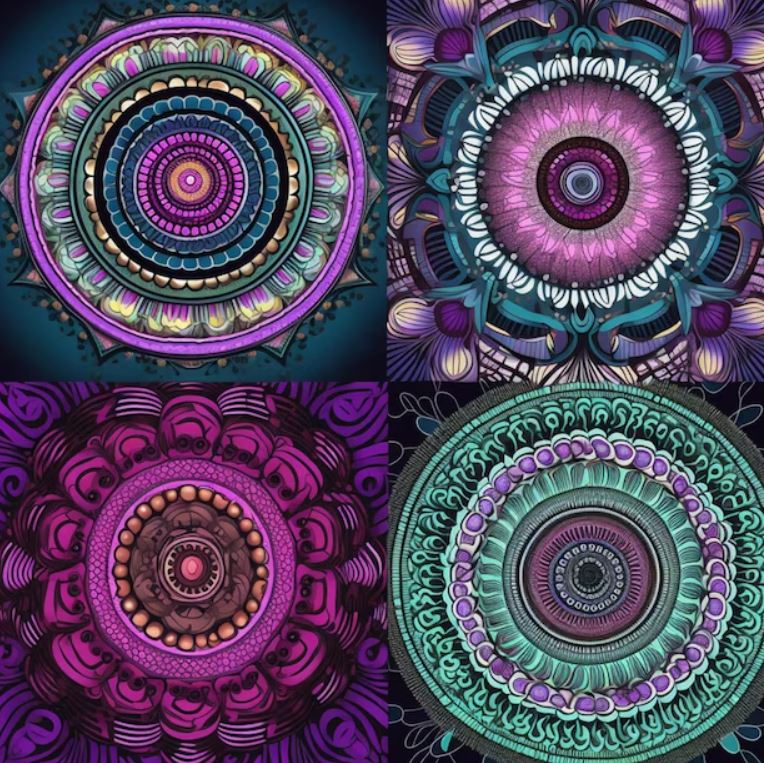
Serene white signifies purity, clarity, and transcendence, while grounding brown represents stability and connection to the Earth. The symbolism of colors in a mandala adds depth and richness to its interpretation, allowing us to tap into a visual language that speaks to our emotions, experiences, and innermost being.
Step 7: Follow Your Intuition
Allow your intuition to guide you through the interpretation process. Trust your inner wisdom and let it lead you to meaningful insights. Remember that there are no right or wrong interpretations. Your understanding of the mandala is unique to you and your personal journey. Allow yourself to be open to unexpected meanings or connections that arise.
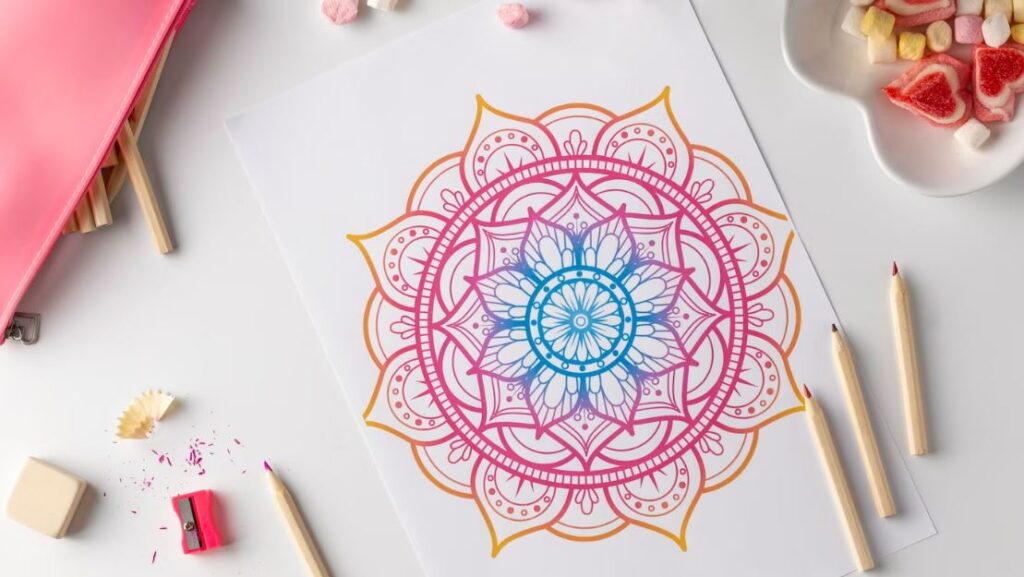
- Trust your intuition: Let your inner wisdom guide your interpretation process.
- Embrace personal understanding: There are no right or wrong interpretations; your unique journey shapes your understanding of the mandala.
- Stay open to unexpected meanings: Be receptive to new insights and connections that may arise during your exploration.
Step 8: Journal Your Interpretation
Take out a journal or a piece of paper and begin writing down your thoughts, feelings, and interpretations. Describe the emotions evoked by the mandala and the meanings you attribute to its various elements. Use descriptive language to capture your experience and insights. For instance, you might write about how the mandala’s intricate patterns represent the complexity of your life or how the colors evoke a sense of inner harmony and balance.
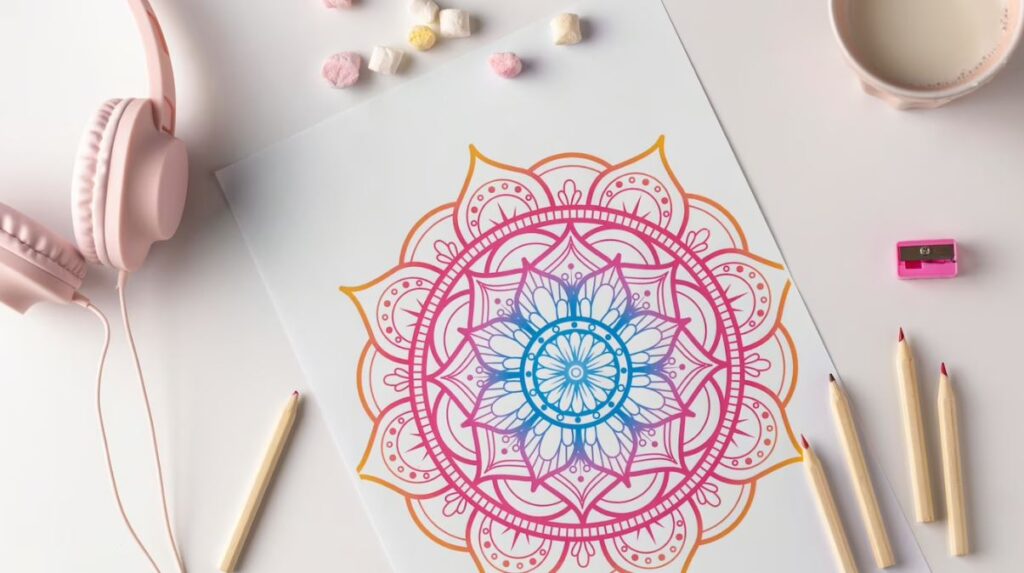
A mandala with descriptive words or phrases incorporated within its design.
A person journaling or writing in a notebook while contemplating a mandala.
Step 9: Explore Archetypes and Symbolic Meanings
Delve into research about archetypes and symbolic meanings that align with the elements you identified in the mandala. Explore how these archetypes relate to your personal interpretation and journey. For example, the image of a tree in the mandala might symbolize growth, grounding, or interconnectedness. Consider how these symbolic meanings may reflect aspects of your identity, challenges, or desires. Reflect on how they resonate with your current life circumstances or personal aspirations.
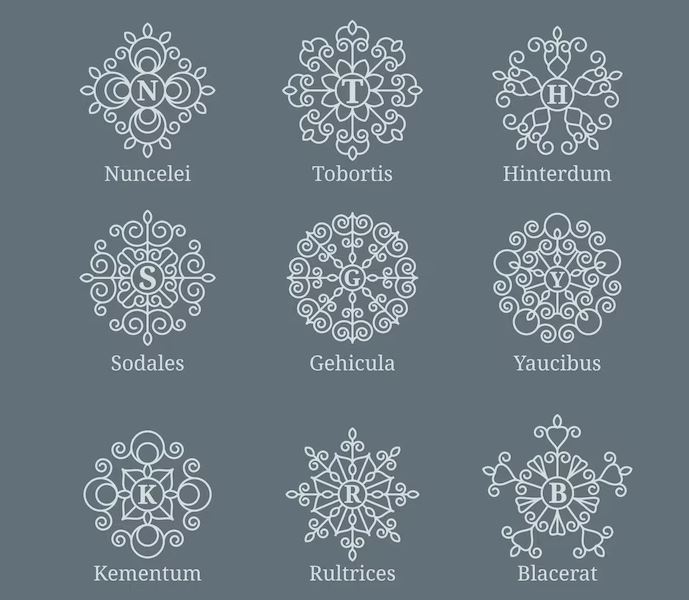
The journey of understanding a mandala is a dance between its symbolic elements and the depths of our own being. Delve into the rich tapestry of archetypes and symbolic meanings, weaving their threads into your personal interpretation. Like a tree firmly rooted in the earth, explore how the branches of these symbols intertwine with your identity, challenges, and desires. Let the wisdom of the mandala illuminate the path to self-discovery, connecting you to the ever-unfolding story of your own existence.
Step 10: Reflect and Apply the Insights

Take time to reflect on the interpretations and insights you have gained from the mandala. Consider how they relate to your current life circumstances, challenges, or goals. Contemplate how you can apply these insights to enhance your personal growth, self-awareness, or creative endeavors. Perhaps the mandala’s message is encouraging you to embrace change, or it might offer guidance on how to find balance in your relationships.
- Reflect on interpretations and insights: Take dedicated time to reflect on the meanings and insights you have derived from the mandala. Consider the connections between these interpretations and your current life circumstances, challenges, or goals. This introspective process allows you to deepen your understanding of the mandala’s messages and how they relate to your personal journey.
- Apply insights for personal growth: Contemplate how you can apply the gained insights to enhance your personal growth, self-awareness, or creative endeavors. Explore how the mandala’s message aligns with areas of improvement or development in your life. For example, if the mandala suggests embracing change, you can reflect on practical ways to implement this in your life. If it provides guidance on finding balance in relationships, consider how you can foster harmony and equilibrium in your interactions.
Step 11: Repeat the Process
Engaging with mandalas is an ongoing journey of self-discovery. Repeat this process with different mandalas or revisit the same one at different stages of your life. Each time, you will uncover new layers of meaning and understanding. Allow yourself to grow and evolve alongside the mandalas you encounter, embracing the continuous exploration of their profound symbolism.
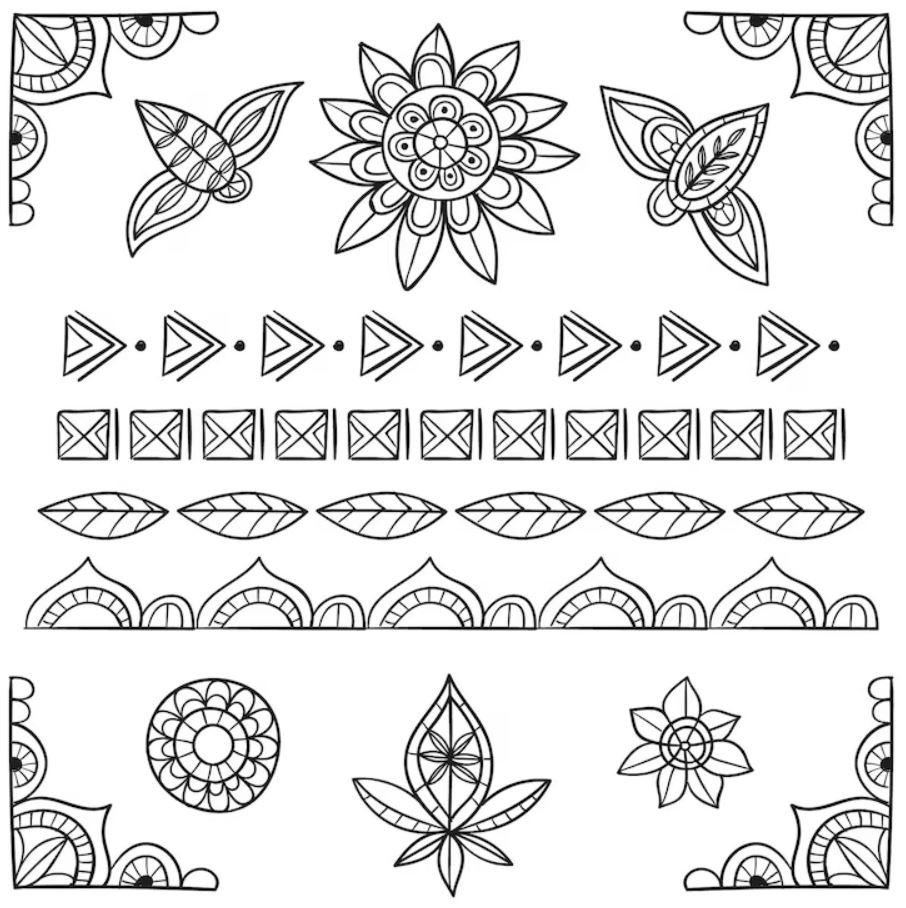
A person standing before a wall adorned with multiple mandalas
Remember, mandala interpretation is a deeply personal and subjective process. Embrace your unique perspective, trust your intuition, and savor the transformative journey of self-discovery that unfolds through the exploration of mandalas.
